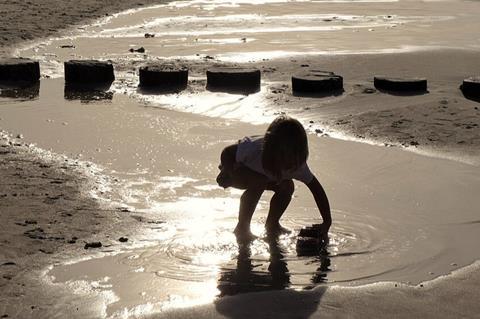With the arrival of the summer and increases in sea surface temperatures, the European Centre for Disease Prevention and Control (ECDC) is highlighting the seasonal risk posed by Vibrio bacteria. The bacteria live naturally in brackish coastal waters, where saltwater and freshwater mix, especially when temperatures are high and salinity is lower. These conditions are becoming increasingly common in parts of Europe due to climate change.

Vibrio species are often detected during the summer in the Baltic Sea, as it offers especially favourable conditions for bacterial growth due to its lower salt concentration. The bacteria have also been found in other places, including the North Sea and various enclosed or estuarine bathing sites and, as sea surface temperatures rise across Europe, it is anticipated that Vibrio will expand to other coastal areas.
READ MORE: Cholera: vaccination or better infrastructure?
READ MORE: Once-subtropical Vibrio infections on the move along coastlines
Vibriosis is caused by several species of Vibrio bacteria, some of which can cause serious infections. These include foodborne infections, after eating raw or undercooked shellfish, and severe bloodstream infections when bacteria enter the body through cuts or wounds on the skin. People with weakened immune systems or chronic liver conditions are particularly vulnerable.
Although Vibrio infections remain relatively rare in Europe, a number of northern countries bordering the Baltic Sea have reported increases in recent years. This has been particularly evident during summers with extended heatwaves and higher water temperatures, such as the one observed in 2018 when 445 cases were reported, more than triple the annual median (126 cases) recorded between 2014 and 2017.
Recognising the symptoms and staying safe
The symptoms of vibriosis depend on how the infection is acquired. In cases where vibriosis is contracted through the consumption of raw or undercooked shellfish, symptoms typically include watery diarrhoea, abdominal pain, nausea, vomiting, fever, and chills. The infection can also arise from bathing in waters with large amounts of Vibrio bacteria, causing ear infections or, if the bacteria come into contact with open wounds, skin-related symptoms such as redness, swelling, and pain around the affected area.
Untreated wound infections may lead to serious complications such as necrotising fasciitis, bloodstream infections, sepsis or even limb amputation, particularly among individuals with underlying conditions (e.g. chronic liver conditions or weakened immune systems).
Take precautions
To reduce the risk of Vibrio infections there are precautions that can be taken, such as avoiding eating raw or undercooked shellfish, particularly oysters, and ensuring that seafood is cooked thoroughly. If you have open wounds, recent piercings, or cuts, it is important to avoid swimming in brackish waters or saltwater, or to cover the affected area with a waterproof bandage. If you accidentally come into contact with seawater while you have scratches, cuts or wounds on your body, it is important to wash the area with clean, fresh water.
Raising awareness among the public, healthcare providers, and travellers is a key step in preventing severe infections and reducing the public health impact of vibriosis. ECDC encourages individuals to be aware of the risks and to consult a doctor if symptoms appear after contact with the type of water where Vibrio bacteria thrive. ECDC also encourages countries that could be affected to set up surveillance of the disease, as it is probably under-reported.
Every summer, ECDC monitors environmental conditions that favour Vibrio growth in the Baltic Sea and publishes regular updates through its Communicable Disease Threats Report and the Vibrio Map Viewer. The map viewer uses real-time satellite data on sea surface temperature and salinity to assess environmental suitability for Vibrio species, providing a snapshot of potential risk across countries.







No comments yet